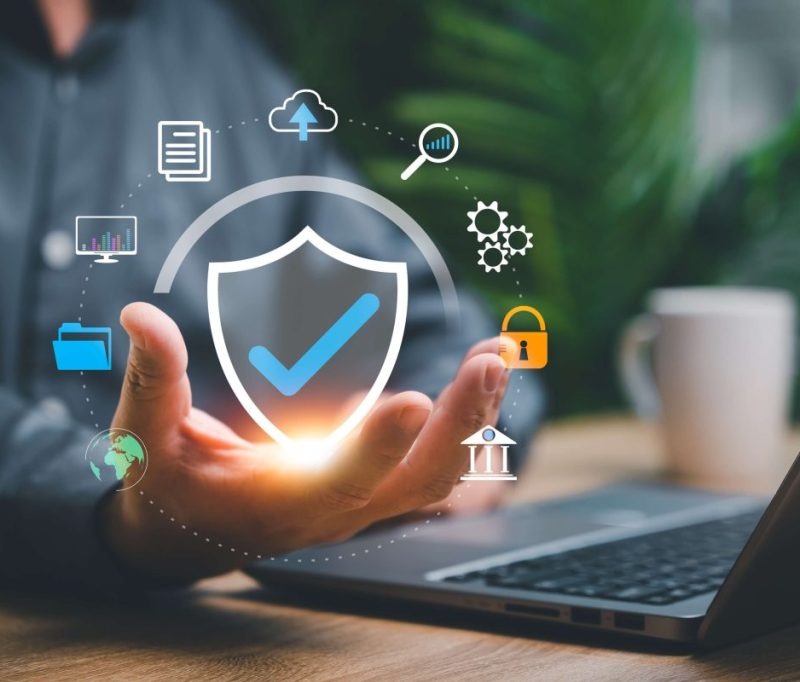What Topics Should Security Awareness Training Address Include?
Explore essential topics every organisation must include in training security awareness programmes to strengthen cyber defence and reduce human error.

In todays interconnected digital world, human error remains the top cause of data breaches. As businesses increasingly rely on digital infrastructure and business internet solutions, a single click on a malicious link or a weak password can expose an entire organisation to cyber threats.
Security awareness training should be a structured, comprehensive programme tailored to the specific needs of an organisation. It must cover key areas that empower employees to recognise threats, adopt best practices, and actively contribute to a culture of cybersecurity.
Below, we explore the essential topics that every security awareness training programme should include.
1. Understanding Cybersecurity Basics
Employees must first understand what cybersecurity means and why it matters.Trainingsecurity awarenessshould explain the core concepts of threats, vulnerabilities, and the potential impact of breaches. Staff should be able to identify common cyberattacks and understand the importance of compliance, especially in regulated industries.
- Educate staff on definitions like malware, ransomware, trojans, spyware, and phishing
- Explain how individual behaviour affects organisational security
- Introduce the importance of using trusted business internet solutions to protect networks and devices

2. Password Hygiene and Management
Weak or repeated passwords continue to be the source of a startling number of security incidents. Good password habits are a frontline defence against unauthorised access.
- Encourage the use of strong, complex passwords with letters, numbers, and symbols
- Promote password managers to safely store login credentials
- Highlight the dangers of writing down passwords or reusing the same credentials across multiple platforms
- Discuss the use of multi-factor authentication as an added layer of protection
3. Phishing and Social Engineering
Phishing remains one of the most effective methods cybercriminals use to trick employees into revealing information or granting access to systems.
- Train employees to recognise suspicious emails, links, or attachments
- Highlight red flags such as unexpected requests, urgent tone, or poor grammar
- Encourage staff to report suspected phishing attempts immediately
- Conduct regular phishing simulations as part of ongoing training security awareness
4. Safe Web Browsing and Email Practices
Unsecure websites and email attachments are common vectors for malware and data theft. A well-trained workforce can identify potentially dangerous content online.
- Teach staff how to verify website security using HTTPS and digital certificates
- Discourage downloading unknown software or plugins
- Highlight the importance of of staying away from clicking on pop-ups or ad banners.
- Emphasise careful handling of unsolicited email attachments
5. Physical and Device Security
Cybersecurity isnt just about digital defences. Physical access to computers and devices can pose serious risks.
- Encourage staff to lock computers when they step back from their workstations.
- Avoid leaving devices unattended in public or shared workspaces
- Stress the importance of secure disposal of printed documents
- Highlight the risks of using unverified USB drives or external media
6. Data Privacy and Protection
Protecting sensitive customer, client, and company data is a legal and ethical responsibility. Data privacy training should help staff understand how to identify, classify, and handle different types of data appropriately.
- Explain the difference between personal, sensitive, and confidential data
- Train staff on proper methods of storing, transferring, and deleting data
- Introduce GDPR and other relevant data protection regulations
- Encourage encryption of emails and files when transmitting sensitive data
7. Remote Work and Hybrid Security Practices
With the rise of remote work, security training must extend beyond the office environment. Misconfigured network connections at home and personal gadgets might become vulnerable.
- Train remote workers to secure their Wi-Fi networks and avoid public hotspots
- Encourage the use of virtual private networks (VPNs) for safer connections
- Recommend that employees separate personal and work devices where possible
- Guide users on how to update and patch software regularly on home systems
8. Mobile Device Security
Mobile phones and tablets are often overlooked in security protocols, but they can be just as susceptible to attacks as traditional workstations.
- Set up mobile device management (MDM) systems to enforce security policies
- Advise employees on safe app downloads from trusted sources only
- Encourage use of screen locks and biometric security features
- Educate about the risks of Bluetooth communication and public charging outlets.
9. Social Media Awareness
Oversharing on social media can lead to targeted attacks and unintended data leaks.
- Teach staff to avoid disclosing company strategies or internal operations online
- Caution employees against accepting unknown friend requests or links
- Demonstrate how attackers can use LinkedIn and other platforms for social engineering
10. Insider Threats and Behavioural Awareness
Not all security threats come from external actors. Insider threatswhether malicious or accidentalcan be just as dangerous.
- Help employees recognise suspicious behaviours among colleagues
- Encourage confidential reporting of policy violations or red flags
- Teach managers how they can react sensitively and safely to insider threats.
- Use anonymised case studies to explain potential scenarios and outcomes
11. Incident Reporting and Escalation Procedures
Quick response to a security event can drastically reduce its impact. Training should clearly communicate how employees should report suspicious activities.
- Provide simple, accessible methods to report incidents (email, hotline, or platform)
- Establish knowledge of who to call both during and following work hours.
- Offer examples of what qualifies as a reportable incident
- Conduct regular drills to assess response readiness

12. Staying Updated and Continuous Learning
Cyber threats evolve constantly, and training must adapt alongside them. Security awareness should not be a one-off event but a continuous cycle.
- Schedule quarterly or bi-annual refresher sessions to reinforce key topics
- Use newsletters, alerts, or an intranet portal to share security news
- Gamify learning through quizzes, challenges, or reward systems
- Align training efforts with the development of broader business internet solutions and IT strategies
Benefits of Effective Security Awareness Training
When organisations prioritise training security awareness, they significantly lower their risk of falling victim to cyberattacks. An aware employee can serve as the first line of defence against even the most sophisticated scams. Moreover, it fosters a culture of accountability and vigilance across departments.
When aligned with robustbusiness internet solutions, these training initiatives ensure that both human and technical defences work in tandem to safeguard company assets.
Conclusion
Security is a shared responsibility, and empowering teams with the right knowledge is essential. Renaissance Computer Services Limited recognises the evolving challenges modern businesses face. We provide tailored IT support, cybersecurity solutions, and business continuity services designed to protect and future-proof your operations. With decades of industry experience and a commitment to excellence, we help organisations build a strong security culture aligned with their infrastructure and growth goals. Trust us to enhance your resilience in an increasingly digital world.























